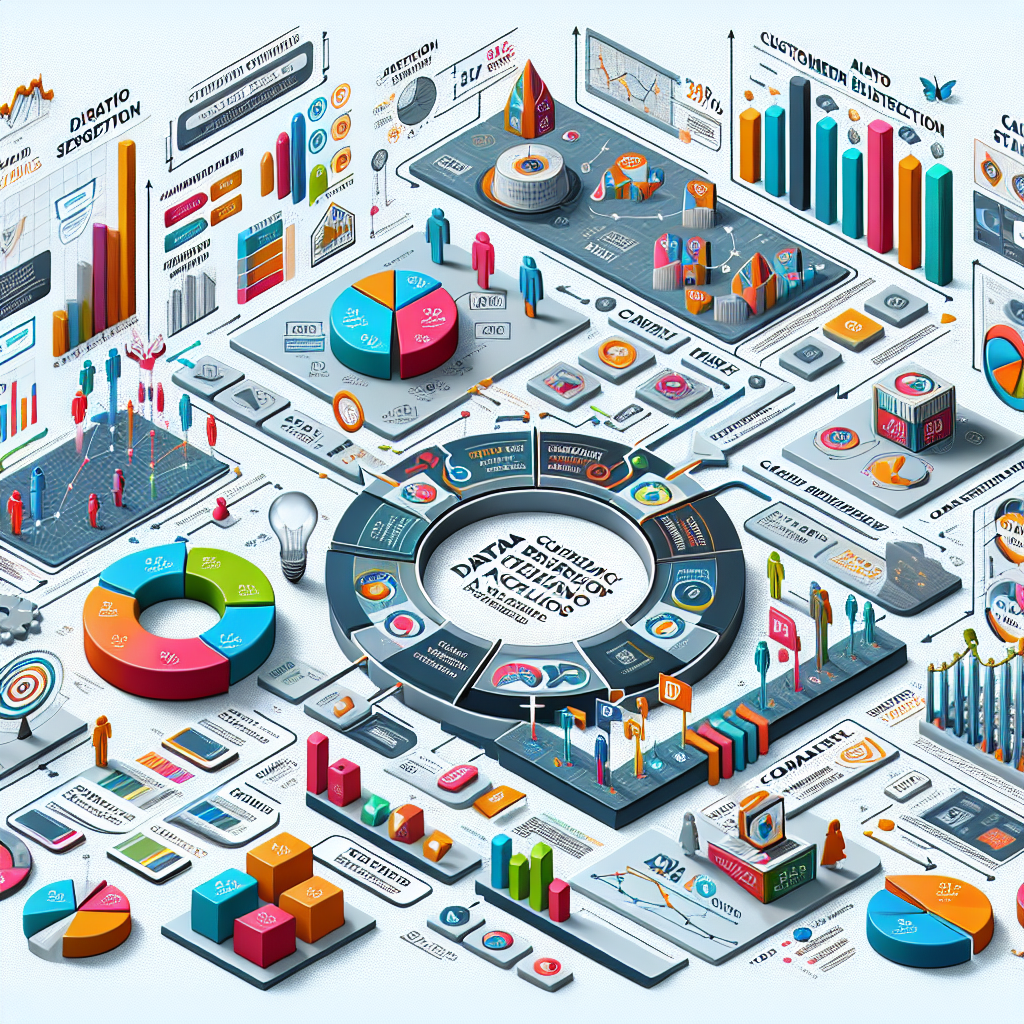In today’s fast-paced digital world, understanding and analyzing data is key to a successful marketing campaign. Data usage analysis provides marketers with valuable insights into consumer behavior, preferences, and trends, ultimately leading to more targeted and effective marketing strategies. This comprehensive guide delves into the importance of data analysis in maximizing marketing ROI and driving business growth. From collecting and interpreting data to creating personalized campaigns that resonate with your target audience, this guide will equip you with the knowledge and tools needed to harness the power of data for marketing success. Discover how data usage analysis can elevate your marketing game and set your brand apart in a competitive market. Don’t forget the basics, this can’t be completed without a high-speed internet connection.
Understanding Data Usage in Marketing Campaigns

In the realm of marketing, data usage refers to the strategic leveraging of information to enhance the effectiveness and efficiency of marketing campaigns. It involves the collection, analysis, and interpretation of data to make informed decisions and optimize marketing strategies. Data usage in marketing is essential for gaining insights into consumer behavior, preferences, and trends, which enables businesses to target the right audience with the right message at the right time.
Definition of Data Usage in Marketing
Data usage in marketing encompasses the systematic process of gathering, organizing, and analyzing data to drive marketing initiatives. This includes utilizing various data sources such as customer databases, website analytics, social media metrics, and market research to understand consumer needs and tailor marketing efforts accordingly. By harnessing data effectively, businesses can personalize their campaigns, measure performance, and improve overall marketing ROI.
Importance of Data Analysis for Marketing Campaigns
- Data analysis is crucial for identifying patterns and trends that can guide marketing strategies and decision-making.
- It enables marketers to segment audiences, target specific demographics, and create personalized campaigns that resonate with consumers.
- By analyzing data, marketers can measure the success of their campaigns, track key performance indicators, and make data-driven adjustments to optimize results.
- Data analysis also helps in understanding consumer preferences, behavior, and engagement with marketing efforts, leading to more effective and efficient marketing campaigns.
Common Misconceptions about Data Usage in Marketing
- One common misconception is that more data always leads to better insights. In reality, it’s crucial to focus on relevant data that aligns with marketing objectives rather than drowning in unnecessary information.
- Another misconception is that data analysis is a one-time task. Effective data usage in marketing requires continuous monitoring, analysis, and adaptation to changing market dynamics and consumer preferences.
- Some may also believe that data analysis is complex and only suitable for large corporations. However, with the advancements in technology and data analytics tools, businesses of all sizes can harness the power of data to drive successful marketing campaigns.
Types of Data Used in Marketing Campaigns
- Customer demographic data: This type of data includes information about the characteristics of customers, such as age, gender, location, income level, and occupation. Understanding the demographics of your target audience is crucial for creating personalized marketing campaigns that resonate with their interests and preferences.
- Purchase history data: Analyzing customers’ past purchases can provide valuable insights into their buying behavior, preferences, and habits. By leveraging purchase history data, marketers can create targeted promotions, recommend products based on previous purchases, and identify cross-selling opportunities to increase sales and customer loyalty.
- Website traffic data: Tracking website traffic metrics, such as the number of visitors, page views, bounce rate, and conversion rate, helps marketers understand how users interact with their online platforms. By analyzing website traffic data, marketers can optimize their website design, content, and user experience to attract more visitors, generate leads, and drive conversions.
- Social media engagement data: Monitoring social media engagement metrics, including likes, comments, shares, and click-through rates, provides valuable insights into how audiences engage with brand content on social platforms. Analyzing social media engagement data helps marketers identify popular content, measure campaign performance, and adjust their social media strategy to increase brand awareness and engagement.

Implementing Data Analysis in Marketing Campaigns
When it comes to implementing data analysis in marketing campaigns, it is crucial to follow a structured approach to ensure the effectiveness and efficiency of the analysis process. Here are key steps to consider:
Setting Clear Marketing Objectives
- Defining Specific Goals: Before diving into data analysis, it is essential to clearly outline the marketing objectives that need to be achieved. These objectives should be specific, measurable, achievable, relevant, and time-bound (SMART).
- Aligning Objectives with Data Metrics: Once the marketing objectives are established, it is important to align them with the relevant data metrics that will be used to measure the success of the campaigns. This alignment ensures that the data analysis is focused on the right parameters.
- Segmenting Target Audience: Data analysis can be more effective when the target audience is segmented based on various criteria such as demographics, behavior, and preferences. This segmentation allows for targeted marketing strategies based on specific audience segments.
Choosing the Right Data Analysis Tools
- Identifying Suitable Tools: Selecting the appropriate data analysis tools is crucial for obtaining accurate insights from the marketing data. Consider factors such as the complexity of data, required analysis techniques, and integration capabilities with existing systems.
- Utilizing Data Visualization: Data visualization tools play a significant role in simplifying complex data sets and presenting insights in a visually appealing format. Visual representations such as charts, graphs, and dashboards can aid in better understanding and decision-making.
- Implementing Automation: Automation tools can streamline the data analysis process by reducing manual efforts and increasing the speed of analysis. Leveraging automation for tasks like data collection, cleansing, and reporting can save time and improve accuracy.
Interpreting Data Analysis Results Accurately
- Analyzing Trends and Patterns: When interpreting data analysis results, it is essential to look for trends, patterns, and correlations within the data. Identifying these insights can help in understanding consumer behavior, campaign performance, and areas for improvement.
- Comparing Key Performance Indicators (KPIs): Evaluating KPIs such as conversion rates, click-through rates, and return on investment (ROI) is critical for assessing the effectiveness of marketing campaigns. Comparing KPIs over time or against benchmarks can provide valuable insights.
- Iterating and Optimizing Strategies: Data analysis is an iterative process that requires continuous monitoring and optimization of marketing strategies based on the insights gained. By adapting campaigns in real-time and testing different approaches, marketers can enhance campaign performance and achieve better results.
Data Collection Methods in Marketing Campaigns
Implementing Data Analysis in Marketing Campaigns
Data collection is a crucial aspect of any successful marketing campaign as it provides valuable insights into consumer behavior and preferences. Utilizing various methods to gather relevant data can significantly enhance the effectiveness of marketing strategies. Below are some key data collection methods commonly used in marketing campaigns:
- Surveys and Questionnaires:
- Surveys and questionnaires are traditional yet effective tools for collecting data from target audiences.
- They can provide valuable insights into customer preferences, satisfaction levels, and purchasing behaviors.
- By designing strategic survey questions, marketers can obtain specific data to tailor their campaigns accordingly.
- Website Analytics Tools:
- Website analytics tools such as Google Analytics offer detailed information about website visitors’ interactions.
- Marketers can track metrics like website traffic, bounce rates, conversion rates, and popular pages.
- Analyzing this data helps in understanding user behavior and optimizing the website for better engagement and conversions.
- CRM Software:
- Customer Relationship Management (CRM) software is a valuable tool for collecting and managing customer data.
- It centralizes customer information, including contact details, purchase history, and interactions with the brand.
- Marketers can use CRM data to personalize marketing campaigns, improve customer retention, and target high-value customers effectively.
- Social Media Listening Tools:
- Social media listening tools enable marketers to monitor conversations and sentiments about their brand on social media platforms.
- By analyzing social media mentions, comments, and trends, marketers can gauge consumer perceptions and preferences.
- This data helps in shaping marketing campaigns that resonate with the target audience and address their needs and concerns effectively.

Incorporating a combination of these data collection methods can provide marketers with a comprehensive understanding of their target audience, allowing them to create data-driven marketing campaigns that yield better results and drive business growth.
Benefits of Data Usage Analysis in Marketing Campaigns
Data usage analysis plays a crucial role in the success of marketing campaigns by providing valuable insights and opportunities for optimization. Here are some key benefits of leveraging data analysis in marketing strategies:
- Personalized marketing strategies
By analyzing customer data such as demographics, behavior patterns, and preferences, marketers can create personalized marketing strategies that resonate with individual consumers. This targeted approach increases the likelihood of engagement and conversion, as customers are more likely to respond positively to content that is tailored to their specific needs and interests.
- Improved targeting and segmentation
Data analysis enables marketers to segment their target audience based on various criteria, such as age, location, purchasing history, and online interactions. By understanding the different segments within their customer base, marketers can tailor their messaging and offers to each group, increasing the relevance and effectiveness of their campaigns. This targeted approach not only improves the overall customer experience but also helps maximize the return on investment for marketing efforts.
- Enhanced campaign performance tracking
Through data usage analysis, marketers can track the performance of their marketing campaigns in real-time, allowing them to make data-driven decisions and adjustments on the fly. By monitoring key metrics such as click-through rates, conversion rates, and customer engagement levels, marketers can quickly identify what is working well and what needs improvement. This iterative approach to campaign optimization ensures that resources are allocated effectively and that marketing efforts are continuously refined for maximum impact.
Case Studies: Successful Implementation of Data Analysis in Marketing
Benefits of Data Usage Analysis in Marketing Campaigns
- Company A: Increased conversion rates through data-driven campaigns
Company A, a leading e-commerce retailer, implemented a comprehensive data analysis strategy to enhance their marketing campaigns. By analyzing customer behavior and purchase patterns, the company was able to segment their audience effectively and tailor personalized marketing messages. Through this data-driven approach, Company A saw a significant increase in conversion rates, with a 20% boost in sales attributed directly to the targeted campaigns based on data analysis.
- Company B: Utilizing data analysis to optimize ad spend
In another case study, Company B, a software-as-a-service provider, leveraged data analysis tools to optimize their advertising spend. By tracking the performance of different marketing channels and campaigns, Company B identified the most cost-effective strategies to reach their target audience. Through continuous analysis and adjustment of their marketing efforts based on data insights, Company B achieved a 30% reduction in ad spend while maintaining the same level of lead generation and customer acquisition.
- Company C: Enhancing customer retention with personalized marketing
Company C, a telecommunications company, focused on enhancing customer retention through personalized marketing initiatives driven by data analysis. By analyzing customer feedback, usage patterns, and engagement metrics, Company C was able to create targeted retention campaigns that addressed specific customer needs and preferences. As a result, the company experienced a 15% increase in customer retention rates and a significant decrease in churn, demonstrating the power of data-driven marketing strategies in fostering customer loyalty.
Challenges and Pitfalls in Data Analysis for Marketing Campaigns
- Data privacy and compliance issues
In the realm of marketing campaigns, one of the primary challenges in data analysis revolves around ensuring data privacy and compliance with regulations such as the General Data Protection Regulation (GDPR) and the California Consumer Privacy Act (CCPA). Marketers must navigate the intricate landscape of collecting and analyzing consumer data while safeguarding individuals’ privacy rights. Failure to uphold data privacy standards can result in severe consequences, including legal penalties and damage to brand reputation.
- Data integration challenges
Another common obstacle in data analysis for marketing campaigns is the complexity of integrating data from various sources. Marketers often deal with disparate datasets coming from sources like customer relationship management (CRM) systems, social media platforms, and website analytics tools. The challenge lies in harmonizing these datasets to create a unified view of the target audience. Data integration issues can lead to inconsistencies, duplication of efforts, and inaccurate insights, hindering the effectiveness of marketing campaigns.
- Over-reliance on data without creativity
While data-driven insights are invaluable for optimizing marketing strategies, an over-reliance on data without fostering creativity can be detrimental. Marketers may fall into the trap of solely relying on quantitative metrics and analytics, overlooking the qualitative aspects that drive consumer engagement and brand resonance. Creativity plays a vital role in crafting compelling campaigns that resonate with the target audience on an emotional level. Balancing data-driven decision-making with creative ideation is essential for developing impactful marketing campaigns that drive results.
Strategies to Overcome Data Analysis Challenges
Investing in data security measures:
- Ensuring robust encryption protocols are in place to protect sensitive customer information
- Conducting regular security audits to identify and address any vulnerabilities in the data storage systems
- Implementing access controls and user authentication mechanisms to prevent unauthorized access to marketing campaign data
- Collaborating with IT security experts to stay updated on the latest data security trends and technologies
Utilizing data visualization tools for better insights:
- Implementing advanced data visualization software to create interactive dashboards and reports
- Utilizing data mapping techniques to identify patterns and trends within marketing campaign data
- Incorporating predictive analytics tools to forecast future campaign performance based on historical data
- Training marketing team members on how to effectively interpret and leverage data visualization tools for strategic decision-making
Encouraging cross-department collaboration for data integration:
- Establishing regular communication channels between marketing, sales, and IT teams to ensure seamless data sharing and integration
- Creating a centralized data repository where all departments can access and contribute to the marketing campaign data
- Developing standardized data formats and protocols to facilitate data exchange between different departments
- Hosting cross-departmental training sessions to educate team members on the importance of data integration for successful marketing campaigns.
Future Trends in Data Usage for Marketing Campaigns
In the rapidly evolving landscape of marketing, data analysis plays a crucial role in shaping successful campaigns. Looking ahead, several key trends are set to revolutionize the way businesses utilize data for their marketing strategies:
- Artificial Intelligence and Machine Learning in Data Analysis
Leveraging artificial intelligence (AI) and machine learning algorithms will enable marketers to process vast amounts of data efficiently. These technologies can identify patterns, trends, and insights that may not be apparent to human analysts, leading to more targeted and effective marketing campaigns.
- Predictive Analytics for Proactive Marketing Strategies
Predictive analytics is poised to become a cornerstone of marketing campaigns, allowing businesses to anticipate customer behavior and preferences. By analyzing historical data and employing advanced modeling techniques, marketers can forecast future trends and tailor their strategies to meet consumer needs before they arise.
- Integration of Offline and Online Data for a Holistic View
As consumers interact with brands through multiple channels, integrating offline and online data sources will be essential for gaining a comprehensive understanding of customer behavior. By combining data from sources such as in-store purchases, website interactions, and social media engagement, marketers can create a unified view of the customer journey and deliver more personalized and seamless experiences.
FAQs Data Usage Analysis for Marketing Campaigns: A Comprehensive Guide
What is data usage analysis for marketing campaigns?
Data usage analysis for marketing campaigns refers to the process of collecting and analyzing data related to the performance of various marketing activities. This includes determining the effectiveness of different marketing channels, understanding customer behavior, and optimizing marketing strategies based on data insights.
Why is data usage analysis important for marketing campaigns?
Data usage analysis is crucial for marketing campaigns as it helps in making informed decisions and improving overall campaign performance. By analyzing data, marketers can identify trends, understand customer preferences, and measure the impact of their marketing efforts. This allows for targeted marketing strategies, improved customer engagement, and higher return on investment.
What types of data are typically used in data analysis for marketing campaigns?
Various types of data are used in data analysis for marketing campaigns, including demographic data, user behavior data, sales data, website traffic data, social media engagement data, and email marketing data. This data can provide valuable insights into customer behavior, preferences, and interaction with the brand, helping marketers tailor their campaigns for better results.
How can data usage analysis help in optimizing marketing campaigns?
Data usage analysis can help in optimizing marketing campaigns by identifying areas of improvement, measuring the effectiveness of different marketing channels, and understanding customer needs and preferences. With data-driven insights, marketers can make informed decisions on where to allocate resources, how to target specific audience segments, and which marketing strategies are yielding the best results.
What are some commonly used tools for data usage analysis in marketing campaigns?
There are various tools and platforms available for data usage analysis in marketing campaigns, including Google Analytics, CRM systems, social media analytics tools, email marketing platforms, and data visualization software. These tools help marketers collect, analyze, and interpret data to gain valuable insights and improve the performance of their marketing campaigns.


